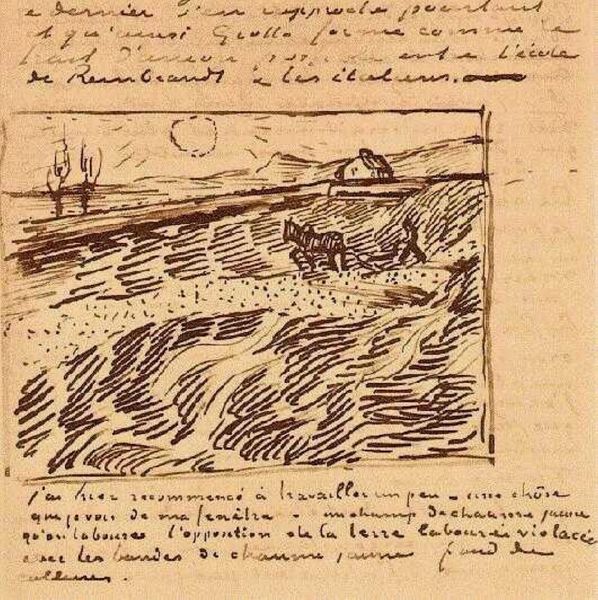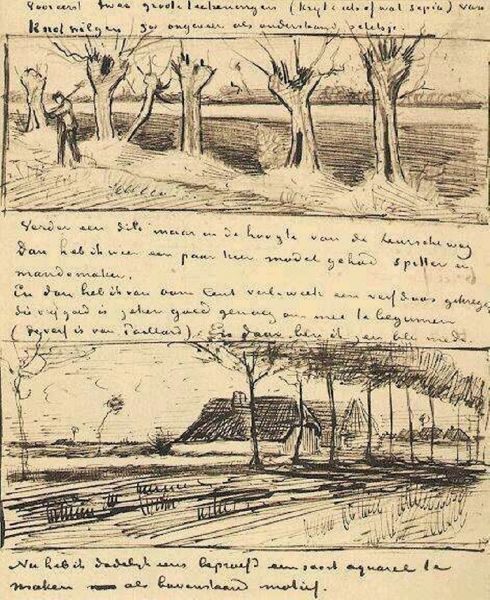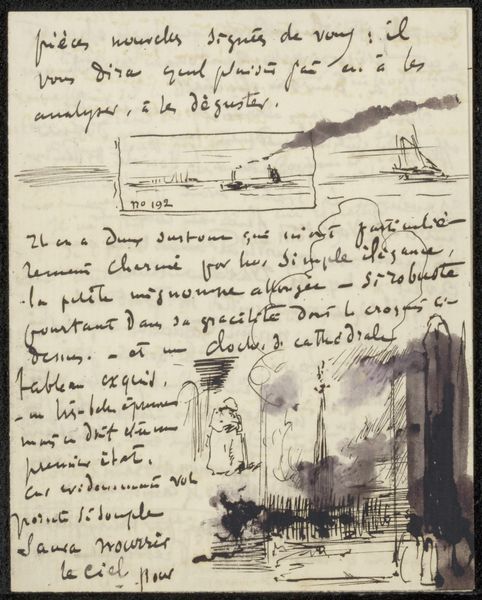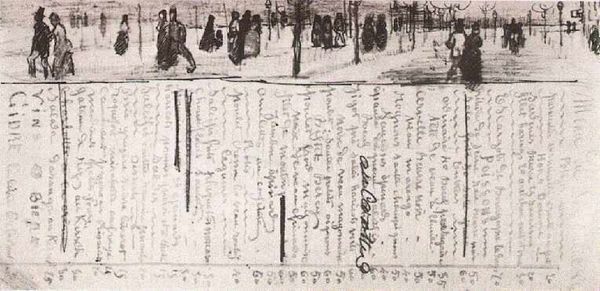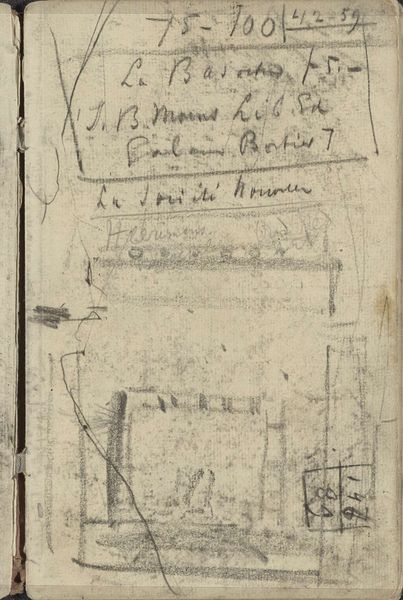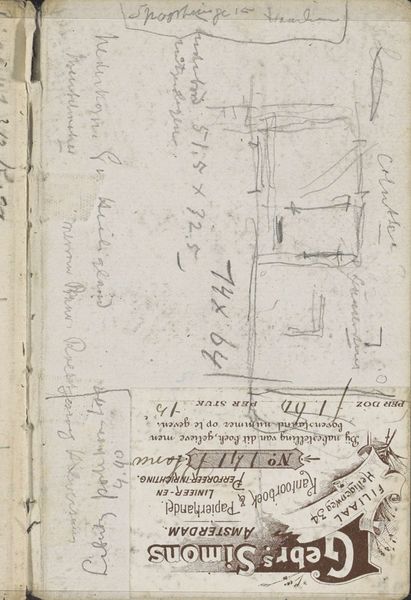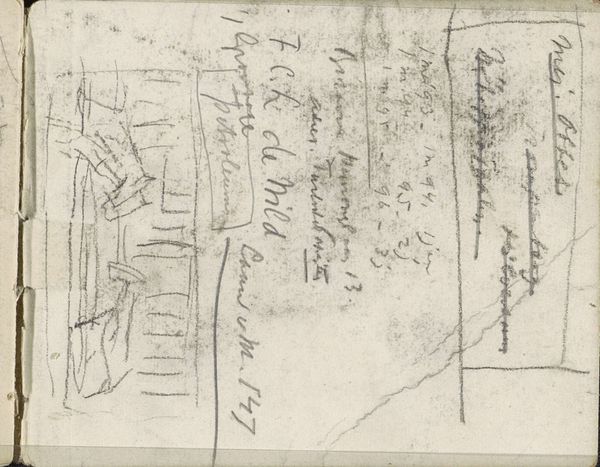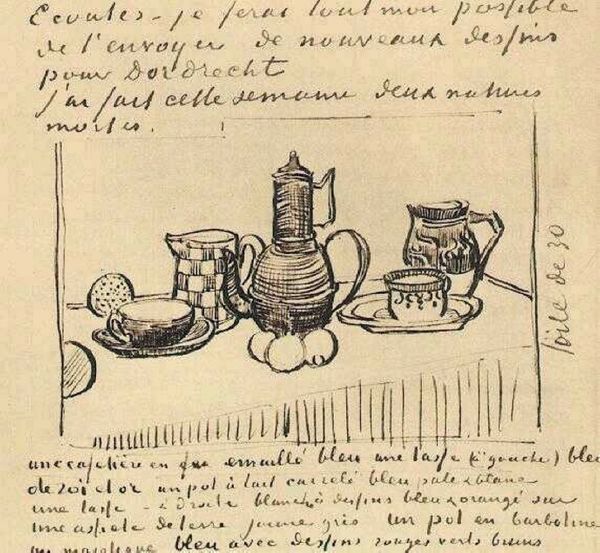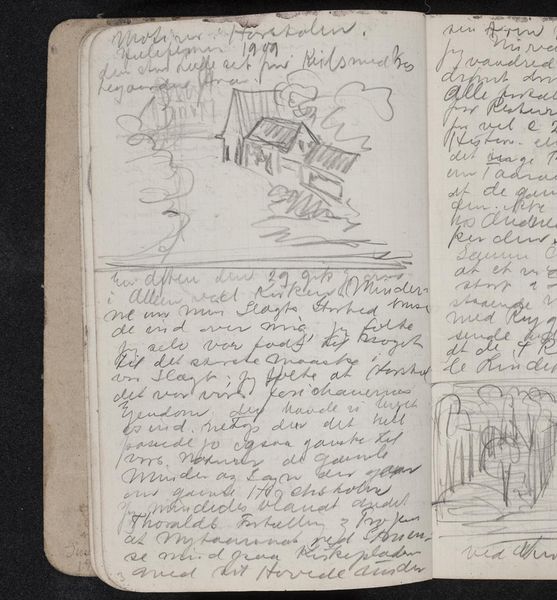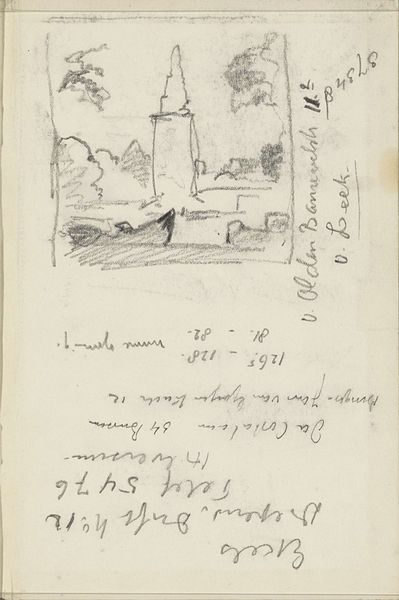
drawing, ink, pencil
#
drawing
#
landscape
#
ink
#
pencil
#
post-impressionism
Copyright: Public domain
Curator: What do you see in Van Gogh’s “Orchard and House with Orange Roof,” an ink and pencil drawing from 1888, housed at the Van Gogh Museum? Editor: It's a quick sketch, a glimpse really, into a landscape. It’s on top of a letter, which adds this interesting fragmented quality to it. How do we interpret a work that is essentially 'nested' within a written document? Curator: Exactly! We must understand that these drawings weren't necessarily intended as isolated artworks. Consider Van Gogh's context: a man wrestling with mental health challenges, communicating with his brother Theo. The letter becomes crucial. What does that textual presence *do* to the image, and vice versa? Does the presence of text give another interpretive key to this orchard landscape? Editor: Hmm, it makes me think about art as communication, beyond just aesthetics. It’s almost as if the words and image are both trying to capture a similar feeling, this particular time. But the words give context, while the image gives mood. Curator: Precisely! And think about the broader political context too. Van Gogh’s choice of subject – an orchard, a house – connects to larger debates about land ownership, the plight of rural workers, and even the rise of industrialization and urbanization. He shows the beauty but indirectly poses the question of what will happen to these places and the labor they sustain. It asks: Who has the right to this landscape, and who profits from it? Editor: So, seeing it this way, it is not just a simple landscape. It is embedded in social and economic struggles of the time. Thanks for expanding how I think about the piece. Curator: Of course! Thinking about art through this broader lens reveals layers of meaning and unveils the artist's engagement with critical social issues.
Comments
No comments
Be the first to comment and join the conversation on the ultimate creative platform.

